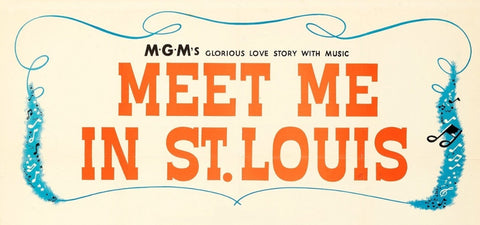Since the earliest days of the movies, studios have been working hard to help cinemas / movie theatres encourage the viewing public through their doors.
For many of us, the only examples of this are the movie posters that we know and love, but they are only one part of the huge marketing campaign that accompanied a film.
Dating back to the 1910s (the earliest we have seen is from 1916), studios have produced press kits / campaign kits / exhibitor campaign books (collectively known as ‘press books’) to encourage a cinema manager to push their film harder than any other.
By way of example, let’s take a look at a film from 1969 and its press book, Guy Hamilton’s all-star World War II thriller “Battle of Britain”.
Battle of Britain (1969)
Setting out to be faithful to the story of the 1940 air war between Britain and Germany, the film “Battle of Britain” recruited an impressive “who’s who” of British acting including Laurence Olivier, Trevor Howard, Michael Redgrave, Ralph Richardson Michael Caine, Christopher Plummer, Robert Plummer and Susannah York.
In contrast to many films before it, it used real aircraft (rather than models) to recreate the spectacular airborne sequences. Over 100 aircraft (“the 35th largest air force in the world”) were assembled, including 27 Spitfires, six Hawker Hurricanes and a further 27 German Messerschmitt Bf 109s.
This was a big film (expenditure topped $14M) and all of United Artists’ marketing guns were deployed for it.
Central to the multi-pronged campaign was the key graphic. Deceptively simple, it captured the main focus of the film, the battle between British and German air-craft.

The Battle of Britain Exhibitors Campaign Book
United Artists had set the standard for marketing campaign design for some years. The press book for this film (in this case entitled the ‘Exhibitors Campaign Book’) brought the thrusts and parries of a large UA marketing campaign together in a whopping 16-page, 12 x 18 inches (30 x 46 cm) front and centre attack!

To give some idea of the breadth of approaches dreamed up by the marketing team, here are some of the approaches presented within it…
With patriotic bull-dog spirit…
Permission to use quotes, from none other than Churchill himself!
Note the direction that “very publicity campaign should incorporate these emotion-charged tributes to Prime Minister Winston Churchill…”

Despite the stereo-typical British stoicism, I’m not sure that there will have been a lot of ‘humorous stories’…

Even a flyer (no pun intended, they are also known as heralds) from a war hero (see 'Reach for the Sky' for more on Douglas Bader).
Click the image for a larger version.
Encouraging recruitment to the Armed Forces…
The ingenious idea here being “to invite newspaper readers to choose the photographs they consider would best encourage enlistment in the WRAF … bearing in mind that … the modern uniforms and caps are really ‘with it’”!

For the Kids…
A couple of games (one cheerfully showing the destruction of central London)…


Even in the late 1970s, we were still playing with these…

And I remember collecting chewing gum cards in the late seventies too…

The Soundtrack
Of course, the soundtrack (composed by Ron Goodwin, apparently replacing an early effort by Sir William Walton) was available too…

The Actors…
The press book also makes much of the ‘all-star’ cast. Each of the main actors is profiled and given a tagline.
Ian McShane, now famous to millions for diverse roles in the Pirates of The Caribbean series, American Gods, Hellboy, Lovejoy (and many many others), is a 'rising star.
Christopher Plummer’s gets the amusing “hates flying”, while Susannah York gets “No English Rose”. Perhaps that sounds a lot less charitable than it was intended!
 |
 |
 |
And finally, the posters…
We’ve only scratched the surface of the press book. There is much more in there for the dedicated cinema manager to have followed, but many are likely to have flicked straight to the back page.
The UK movie posters for this film are beautifully sparse, simply reproducing the key graphic, title and credits.
The forty-eight-sheet poster, at a whopping 120 inches by 240 inches (over 3m x 6m), must have been a sight to behold.
The price of the posters (the quad is the equivalent of about £2.80 today) would make most collectors weep!
Click the image for a larger version.
However, luckily for the collector, clearly not every cinema manager adhered to the Important Notice that accompanied the posters…

It is fantastic to look through vintage press books and to fully appreciate the breadth of creativity that went in to the release and publicity of a movie.
In today’s multi-channel, digitally integrated world, I imagine the twelve pages of the ‘Battle of England Exhibitor’s Campaign Book” look wonderfully naïve, from a bygone age, and it is all the more wonderful for that.
A few words about United Artists Corporation Limited…
Formed in 1919 by Charlie Chaplin, Douglas Fairbanks, Mary Pickford and D.W. Griffith, United Artists first opened its UK subsidiary in 1921.
By the time of ‘Battle of Britain’ (1969) the parent company had publicly listed (1957) and in 1967 been purchased by Transamerica Corporation, who had incorporated the ‘T’ of their logo within UAs branding.
So little is recorded about British cinema and film marketing at this time, but given the dates and companies involved, we can speculate on how the campaign may have come about. United Artists were based on Mortimer Street, a few minutes’ walk from Wardour Street (Since 1907, this street had been the heart of UK film publicity and distribution).
By the 1960s, Wardour Street was a “rabbit warren where everybody knew everyone else” (‘British Film Posters – An Illustrated History’, Sim Branaghan, 2006) and so it is likely that UA’s publicity rep Charlie Bateman met with his advertising agency counterpart somewhere in the interconnected narrow road network of London’s Soho. Downton Advertising Limited had UA’s contract for big films and so it is likely the legendary Eric Pulford who sat with Bateman, perhaps in one of the many pubs frequented by film publicity men and their colleagues, to dream up the image of a swirling Spitfire and a German Messerschmitt plane.
Despite living on in name, United Artists effectively ceased to exist in 1986 when Turner Broadcasting System, Inc bought the combined MGM / UA for $1.5B and renamed it the MGM Entertainment Co.
Adam and the Art of the Movies team






